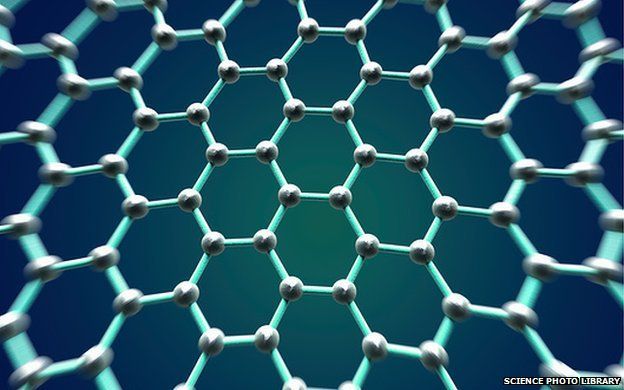Graphene 'wonder material' made with kitchen blender
- Published

Scientists have outlined how they managed to make the "wonder material" graphene using a kitchen blender.
Graphene is thin, strong, flexible and electrically conductive, and has the potential to transform electronics as well as other technologies.
An Irish-UK team poured graphite powder (used in pencil leads) into a blender, then added water and dishwashing liquid, mixing at high speed.
The results are reported in the journal Nature Materials.
Because of its potential uses in industry, a number of researchers have been searching for ways to make defect-free graphene in large amounts.
The material comprises a one-atom-thick sheet of carbon atoms arranged in a honeycomb structure. Graphite - mixed with clay to produce the lead in pencils - is effectively made up of many layers of graphene stacked on top of one another.
Jonathan Coleman from Trinity College Dublin and colleagues tested out a variety of laboratory mixers as well as kitchen blenders as potential tools for manufacturing the wonder material.
They showed that the shearing force generated by a rapidly rotating tool in solution was sufficiently intense to separate the layers of graphene that make up graphite flakes without damaging their two-dimensional structure.
However, it's not advisable to try this at home. The precise amount of dishwashing fluid that's required is dependent on a number of different factors and the black solution containing graphene would need to be separated afterwards.
But the researchers said their work "provides a significant step" towards deploying graphene in a variety of commercial applications.
The scientists have been working with UK-based firm Thomas Swan to scale up the process, with the aim of building a pilot plant that could produce a kilo of graphene per day by the end of the year.
In addition to its potential uses in electronics, graphene might have applications in water treatment, oil spill clean-up and even in the production of thinner condoms.
In 2010, Manchester University researchers Andre Geim and Konstantin Novoselov shared the Nobel Prize in Physics for their discovery of graphene. They published details of their advance in the academic journal Science in 2004.
They famously used sticky tape to peel off the layers of graphene from graphite.
Graphene can currently be grown atom-by-atom via a process called chemical vapour deposition. However, while this can produce metre-scale sheets of graphene, they also contain defects which can inhibit their properties.